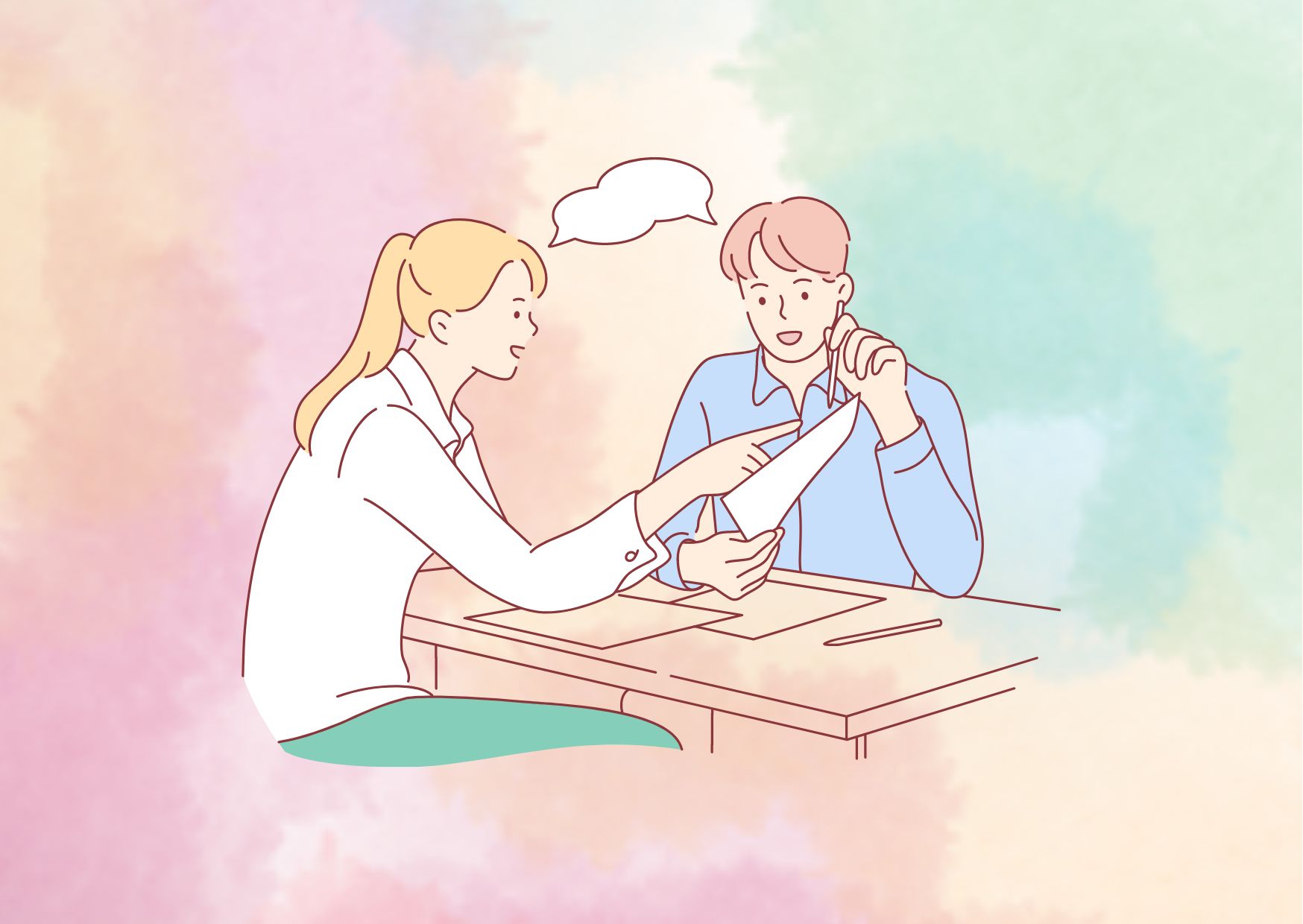Top 10 Signs a Coworker Likes You: How to Tell for Sure
Navigating the subtleties of workplace relationships can often be as complex as the work itself. The intrigue of deciphering whether a coworker harbors more than just professional admiration towards you adds an additional layer to daily interactions. Understanding the signs a coworker likes you can be pivotal—not only for your personal life but also for maintaining professionalism and harmony in the office environment. This knowledge helps in distinguishing between friendly camaraderie and genuine interest, ensuring that individuals navigate their workplace interactions with the necessary insight and sensitivity.
To aid in this nuanced understanding, the article delves into recognizing nonverbal cues and observing behavioral signs, which are key indicators of a coworker’s affections. From the way they communicate with you to their behavior in social settings, each aspect provides clues. Support and assistance beyond professional obligations, understanding the context of their actions, and the nuances between male and female coworkers’ expressions of interest are explored to offer a comprehensive guide. Furthermore, it outlines the dos and don’ts in the workplace, providing advice on how to communicate your feelings effectively. By offering this roadmap, the article aims to empower readers with the knowledge to discern signs a coworker likes you, facilitating more informed and considerate interactions in the professional realm.
Recognizing Nonverbal Cues a Coworker Likes You
Effective communication in the workplace transcends spoken or written words, significantly involving the interpretation of nonverbal cues. These cues, which include body language like facial expressions, gestures, and posture, play a critical role in conveying thoughts and emotions, both consciously and unconsciously. Recognizing and understanding these signals can provide profound insights into a coworker’s feelings, potentially indicating a personal affinity beyond professional interactions.
Eye Contact and Body Language
Eye contact is often described as a window into a person’s thoughts or feelings. When a coworker consistently makes eye contact during conversations, it suggests they are engaged and interested in the interaction. This level of engagement is typically complemented by affirmative nods or a slight lean towards the speaker, signaling attentiveness and approval. However, prolonged eye contact might be perceived as intimidating, whereas a lack of eye contact could imply disinterest or discomfort.
Body orientation also offers clues about a person’s interest level. For instance, turning one’s body to face someone directly, maintaining open arms, and leaning in are indicators of openness and engagement. Conversely, crossed arms or legs, frequent fidgeting, or a body turned away might suggest a lack of interest or a defensive stance.
Understanding these body language cues requires one to be observant and empathetic, considering the individual’s personality and the context of their behavior. This awareness not only helps in interpreting their feelings accurately but also in adjusting one’s own nonverbal responses to foster a positive interaction.
Physical Touch and Proximity
Physical touch, although more subtle in workplace settings, is a powerful communicator of affection and comfort. Non-sexual touches such as a gentle pat on the back or a brief touch on the arm during conversation can signify camaraderie and support. However, the appropriateness of touch can vary significantly across different cultures and individual comfort levels, making it essential to be considerate and observant of the other person’s reactions.
Proximity, or the physical distance between individuals during interaction, also plays a significant role in communication. Edward T. Hall’s concept of proxemics explains that the distance maintained during interaction can indicate the level of intimacy or comfort. For example, intimate distances (6 to 18 inches) are usually reserved for close relationships, whereas larger distances might be maintained during professional interactions.
In the workplace, observing how a coworker manages their physical distance during routine interactions can provide clues about their personal inclinations towards others. A coworker who consistently maintains or decreases physical distance might be indicating a preference for closer personal connections.
Recognizing and interpreting these nonverbal cues are essential for navigating interpersonal relationships in the workplace effectively. By being mindful of both one’s own and others’ nonverbal signals, individuals can foster more meaningful and respectful communications.
Observing Behavioral Signs
In the workplace, observing behavioral signs is a crucial method for discerning whether a coworker harbors feelings that go beyond professional interest. These signs are often subtle and require a keen eye for detail to interpret correctly. This section will focus on two primary behavioral indicators: frequent interactions and remembering small details.
Frequent Interactions
One of the most telling signs a coworker likes you is an increase in the frequency of their interactions with you. This might manifest as them seeking you out during breaks, initiating conversations more often than with others, or finding reasons to be near you. For instance, if they frequently join you for lunch or coffee breaks without a direct work-related reason, it could indicate a personal interest. Additionally, attending events outside of work, such as drinks every few weeks or participating in group activities like ball games or 10K runs, can also be a sign, especially if they make a consistent effort to invite you or ensure you are aware of these gatherings.
Remembering Small Details
Another significant behavioral sign is the attention a coworker pays to the details about you. If a colleague remembers small, seemingly inconsequential details you’ve shared, such as your favorite food, your hobbies, or even important dates in your life, it reflects a level of attention that typically extends beyond professional courtesy. This could include recalling your preferences without prompting during a team lunch or bringing up topics you’re interested in during conversations to engage with you further.
Moreover, remembering key personal information and bringing it up in appropriate contexts not only shows that they value your conversations but also that they are thinking about you outside of the immediate work interactions. This level of detail-oriented attention is often a marker of deeper personal interest and can be a clear indicator that a coworker likes you.
By paying attention to these behavioral signs, one can gain insights into the nature of a coworker’s interest, helping to navigate the complex dynamics of workplace relationships more effectively. Observing how a coworker interacts with you compared to others can provide valuable clues about their feelings, enabling you to respond appropriately based on your comfort and interest levels.
Communication Patterns
In the dynamic environment of workplace relationships, understanding the communication patterns of coworkers can offer significant insights into their feelings and intentions. This section explores two critical aspects of communication that can signal a coworker’s personal interest: Compliments and Jokes, and Texting and Messaging Outside Work.
Compliments and Jokes
Compliments in the workplace can often serve dual purposes—they can be a genuine expression of admiration or a strategic move to establish a rapport. When a coworker consistently compliments your work or personal attributes, it might indicate their interest in fostering a closer relationship. However, the tone and context of these compliments are crucial. Positive, straightforward compliments are typically harmless and part of healthy workplace interactions.
Conversely, “negging,” a form of backhanded complimenting, can be a red flag. This tactic involves giving compliments that contain a critical element, often used to undermine the recipient’s confidence while elevating the giver’s status. For example, a comment like, “You handled that well for someone with your experience,” can seem like praise but actually carries a subtle critique. Understanding these nuances is vital in discerning someone’s true intentions.
Jokes and humor also play a significant role in communication patterns. When a coworker frequently shares jokes with you or includes you in humorous exchanges, it can be a sign of affinity and an attempt to create a personal connection. However, the content of the jokes and the context in which they are shared should always be appropriate and respectful.
Texting and Messaging Outside Work
The extension of communication beyond office hours through texts and messages can indicate a coworker’s desire to develop a more personal relationship. This form of communication, especially when it is consistent and initiates casual conversation rather than strictly work-related topics, suggests a level of comfort and a desire to connect on a more personal level.

